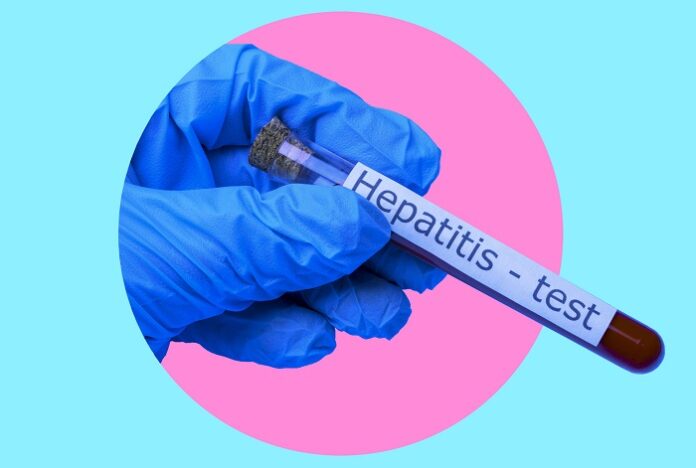Abstract
Hepatitis poses a significant challenge globally, with its diverse strains and modes of transmission. The complexity lies in preventing its spread, ensuring early diagnosis, and promoting vaccination. Overcoming this challenge requires comprehensive public health efforts, awareness campaigns, and accessible healthcare services to address the burden of hepatitis effectively. This editorial focuses on raising awareness among the population, which is crucial for combating the spread of the disease. By educating individuals about the modes of transmission, preventive measures, and the importance of vaccination, we can empower them to protect themselves and others. Increasing awareness can lead to early detection, timely treatment, and the adoption of safe practices, ultimately reducing the burden of hepatitis on individuals and communities. Promoting hepatitis awareness is vital to ensuring better health outcomes and preventing the further spread of this global health concern.
Keywords: hepatitis, transmission, awareness, vaccination, prevention.
Conflict of Interest: Aristo Pharmaceuticals Private Limited, India
Source of Support: None declared
Introduction
Viral hepatitis, an inflammation of the liver is one of the major global public health issues and every year millions of individuals suffer from it. Hepatitis demonstrates diverse symptoms when initially diagnosed, and it can advance from mild symptoms to severe conditions such as liver cirrhosis, posing a threat to life. Viral Hepatitis caused 1.4 million fatalities worldwide, a number comparable to deaths caused by tuberculosis and higher than those caused by HIV. [1, 2] Today, over 350 million people live with viral hepatitis. Every 30 seconds, someone loses their life to a hepatitis-related illness. As a result, viral hepatitis has been identified as a worldwide health priority, and numerous comprehensive public health initiatives have been put into place. Hepatitis is now equated as a threat comparable to the “big 3” infectious diseases in India, along with HIV/AIDS, malaria, and tuberculosis.
The ambitious goal of the World Health Organization’s (WHO) worldwide viral hepatitis eradication strategy is to eradicate the disease as a danger to public health by 2030.[1]Any of the five known viruses, Hepatitis A Virus (HAV), Hepatitis B Virus (HBV), Hepatitis C Virus (HCV), Hepatitis D Virus (HDV), and Hepatitis E Virus (HEV), can result in viral hepatitis.
Maintaining liver health is vital for overall well-being, as viral hepatitis silently undermines its function. Symptoms typically manifest in the later stages of the disease. Prioritizing liver health is essential to protect oneself and loved ones from this avoidable tragedy. The World Health Organization has chosen “One life, one liver” as the theme for World Hepatitis Day 2023, emphasizing the significance of safeguarding our liver for a healthy life.
1President-Medical & Regulatory Affairs, Dept. of Scientific, Aristo Pharmaceuticals Private Limited, India
Corresponding author: Dr. Manish Maladkar, President-Medical & Regulatory Affairs, Dept. of Scientific, Aristo Pharmaceuticals Private Limited, India Email:scientific@aristopharma.co.in
The Escalating Hepatitis Crisis
Hepatitis is caused by various viruses, each with different sources of transmission. HAV spreads through contaminated food, water, or objects contaminated with feces. HBV is transmitted through infected blood, semen, or other body fluids, including sharing needles and sexual contact. HCV primarily spreads through infected blood, typically via needle sharing or unsanitary medical procedures, and occasionally through sexual contact. HDV occurs in individuals already infected with hepatitis B, either as co-infection or superinfection. HEV is contracted through contaminated water or food, particularly in areas lacking proper sanitation.
According to available literature, HAV is responsible for 10-30% of acute hepatitis cases and 5-15% of acute liver failure cases in India. Similarly, HEV is reported to account for 10-40% of acute hepatitis cases and 15-45% of acute liver failure cases. Both HAV and HEV play significant roles in causing acute viral hepatitis and acute liver failure (ALF).[3] Based on some regional-level studies, it is estimated that in India, approximately 40 million people are chronically infected with Hepatitis B and 6-12 million people with Hepatitis C. Chronic HBV infection accounts for 40% of Hepatocellular Carcinoma (HCC) and 20-30% cases of cirrhosis. Chronic HCV infection accounts for 12-32% of HCC and 12-20% of cirrhosis.[4]
The prevalence of Hepatitis B surface Antigen (HBsAg) positivity in the general population ranges from 1.1% to 12.2%, with an average prevalence of 3-4%. The estimated prevalence of anti-HCV antibodies in the general population is between 0.09% and 15%.[3]
Prevention Strategies: An Urgent Call for Awareness
In India, several policies and initiatives have been implemented to prevent hepatitis. Here are some key policies for the prevention of hepatitis in India:
The National Viral Hepatitis Control Program (NVHCP) was launched in 2018 by the Ministry of Health and Family Welfare, Government of India, to eliminate viral hepatitis as a public health threat by 2030. The program focuses on preventing, diagnosing, treating, and surveilling viral hepatitis, including hepatitis B and C.
- Enhance community awareness of hepatitis and lay stress on preventive measures among the general population especially high-risk groups and in hotspots.
- Provide early diagnosis and management of viral hepatitis at all levels of healthcare
- Develop standard diagnostic and treatment protocols for the management of viral hepatitis and its complications.
- Strengthen the existing infrastructure facilities, build capacities of existing human resources, and raise additional human resources, where required, for providing comprehensive services for the management of viral hepatitis and its complications in all districts of the country.
- Develop linkages with the existing National programs towards awareness, prevention, diagnosis, and treatment for viral hepatitis.
- Develop a web-based “Viral Hepatitis Information and Management System” to maintain a registry of persons affected with viral hepatitis and its sequel.[3]
Hepatitis on the Radar: Strengthening Public Health Responses
India has implemented several significant efforts to combat hepatitis infections. The national immunization agenda ensures that all infants receive the hepatitis B vaccine within 24 hours of birth, followed by three additional doses. Blood banks are regulated by law, mandating screening for hepatitis B, C, and HIV in licensed facilities. Targeted interventions have been conducted among key populations, such as migrants, truckers, sex workers, and drug users, providing prevention services and support. Surveillance programs monitor hepatitis outbreaks through the Integrated Disease Surveillance Program and other centers. Laboratories play a crucial role in testing, prevention, and treatment. Some states, including Punjab, Assam, Manipur, Tripura, and Haryana, offer free or subsidized treatment for hepatitis C. Injection safety and infection control practices are being strengthened in healthcare settings.
The Pradhan Mantri National Dialysis Program emphasizes injection safety and hepatitis control. Efforts are being made to manage biomedical waste effectively. Treatment sites and designated centers deliver hepatitis services, and hepatitis B immunization has been universalized. The Swachh Bharat Abhiyan promotes sanitation and waste management to combat hepatitis A and E infections. Laboratories across various healthcare levels offer diagnostic services. India aims to achieve high coverage of hepatitis B vaccination, especially in infants and healthcare workers. Research programs are initiated to enhance knowledge and track the impact of the national action plan. Awareness programs focus on safe practices and prevention methods, including safe drinking water and sanitation.
Steps Towards Control and Prevention
To prevent hepatitis and minimize the risk of infection, follow these precautions: To prevent hepatitis and minimize the risk of infection, adhere to these precautions: First, make sure to receive vaccinations for both hepatitis A and B. For adults, the Hepatitis A vaccine is administered with the first dose followed by the second dose after a 6-month interval. As for the Hepatitis B vaccine, adults typically receive the 1st dose, the 2nd dose after 1 month, and the 3rd dose after 6 months. Otherwise, the combined Hepatitis A and B vaccine is commonly given according to a dosage schedule comprising the 1st dose, the 2nd dose after 1 month, and the 3rd dose after 6 months. In the pediatric population, the Hepatitis B vaccine schedule involves HB1 at birth, HB2 at 6 weeks, HB3 at 10 weeks, and HB4 at 14 weeks.
Secondly, to avoid transmission of hepatitis A and E practice good hygiene by washing your hands thoroughly after using the restroom, before handling food, and following any contact with bodily fluids. Take precautions while traveling to regions with high hepatitis prevalence, such as using bottled water, avoiding undercooked food, and practicing hand hygiene. Maintain a clean-living environment, especially in shared facilities.
To prevent hepatitis B and C, it is important to take certain precautions. When engaging in sexual activity, practice safe sex by using condoms, limiting sexual partners, and ensuring that partners have been tested for hepatitis. Individuals who consume narcotics often face a high risk of contracting hepatitis B, C, and HIV. Therefore, it is crucial to refrain from sharing needles to prevent the transmission of these infections. Prioritize safety when getting tattoos or piercings by confirming that the studios employ proper sterilization techniques and use sterile equipment and dyes. Additionally, in hospital setups ensure that any blood transfusions or products you receive originate from reliable and regulated sources. Lastly, if you have been exposed to hepatitis or experience symptoms like fatigue, jaundice, abdominal pain, or dark urine, seek medical attention, get tested, and consider treatment.
A Glimpse into the Future
Ongoing research aims to improve hepatitis management with novel antiviral agents like lonafarnib and bulevirtide targeting the HDV life cycle. Combining them with PEG-interferon is explored, but side effects pose challenges. HDV superinfection prevention through vaccination is also considered. The pursuit of an HCV vaccine remains vital due to limitations in current treatments for high cure rates.[5] Viral hepatitis causes substantial health loss, making investments in achieving Open air Defecation Free (ODF) status, safe water supply, and minimizing cross-contamination crucial for public health improvement. Such initiatives combat viral hepatitis and enhance overall well-being.[3]
Conclusion
Despite viral hepatitis remains a significant public health concern, there have been remarkable advancements in their management and prognosis in recent years. However, it is imperative to continue and enhance research efforts aimed at discovering effective new therapies. Simultaneously, it is crucial not to overlook the importance of implementing preventive measures as a foundation for reducing the disease’s impact on public health. By continuing these efforts, substantial advancements can be achieved in reducing the impact of viral hepatitis and ultimately leading to a future free from hepatitis.
References
- Dunn R, Wetten A, McPherson S, et al. Viral hepatitis in 2021: The challenges remaining and how we should tackle them. World J Gastroenterol. 2022;28(1):76-95.
- Anand A, Shalimar. Hepatitis C virus in India: Challenges and Successes. Clin Liver Dis (Hoboken). 2021 Jul 22;18(3):150-154.
- Kishanrao S. Viral Hepatitis in India. Arch Hepat Res. 2020;6(1):3-6.
- National Viral Hepatitis Control Program. Launch of National Viral Hepatitis Control Program. https://nvhcp.mohfw.gov.in/ [Internet]. 2018;1. Available from: https://nvhcp.mohfw.gov.in/Launch-of-National-Viral-Hepatitis-Control-Program.
- Odenwald MA, Paul S. Viral hepatitis: Past, present, and future. World J Gastroenterol. 2022;28(14):1405-1429.
























